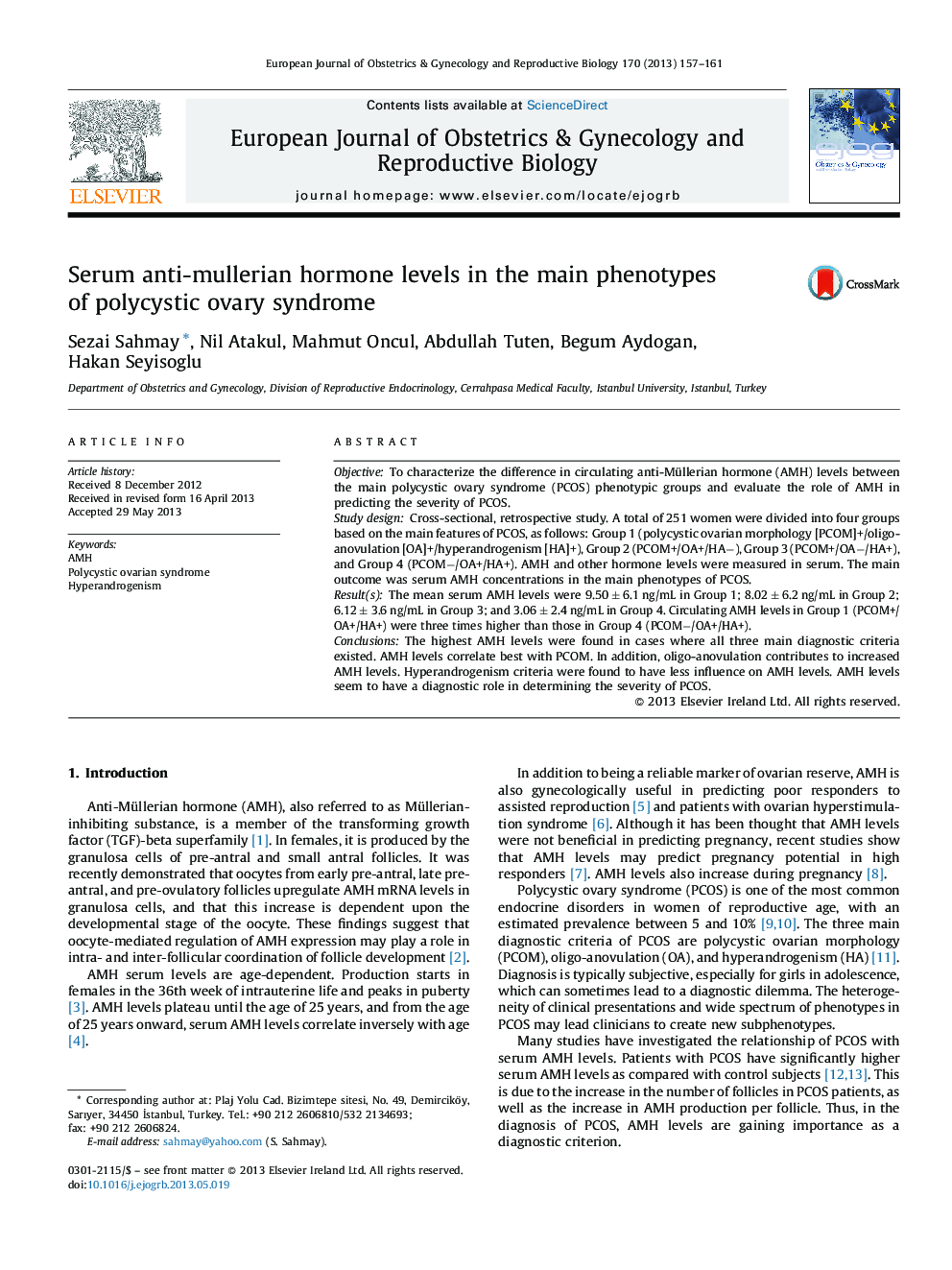| کد مقاله | کد نشریه | سال انتشار | مقاله انگلیسی | نسخه تمام متن |
|---|---|---|---|---|
| 3919991 | 1599813 | 2013 | 5 صفحه PDF | دانلود رایگان |

ObjectiveTo characterize the difference in circulating anti-Müllerian hormone (AMH) levels between the main polycystic ovary syndrome (PCOS) phenotypic groups and evaluate the role of AMH in predicting the severity of PCOS.Study designCross-sectional, retrospective study. A total of 251 women were divided into four groups based on the main features of PCOS, as follows: Group 1 (polycystic ovarian morphology [PCOM]+/oligo-anovulation [OA]+/hyperandrogenism [HA]+), Group 2 (PCOM+/OA+/HA−), Group 3 (PCOM+/OA−/HA+), and Group 4 (PCOM−/OA+/HA+). AMH and other hormone levels were measured in serum. The main outcome was serum AMH concentrations in the main phenotypes of PCOS.Result(s)The mean serum AMH levels were 9.50 ± 6.1 ng/mL in Group 1; 8.02 ± 6.2 ng/mL in Group 2; 6.12 ± 3.6 ng/mL in Group 3; and 3.06 ± 2.4 ng/mL in Group 4. Circulating AMH levels in Group 1 (PCOM+/OA+/HA+) were three times higher than those in Group 4 (PCOM−/OA+/HA+).ConclusionsThe highest AMH levels were found in cases where all three main diagnostic criteria existed. AMH levels correlate best with PCOM. In addition, oligo-anovulation contributes to increased AMH levels. Hyperandrogenism criteria were found to have less influence on AMH levels. AMH levels seem to have a diagnostic role in determining the severity of PCOS.
Journal: European Journal of Obstetrics & Gynecology and Reproductive Biology - Volume 170, Issue 1, September 2013, Pages 157–161